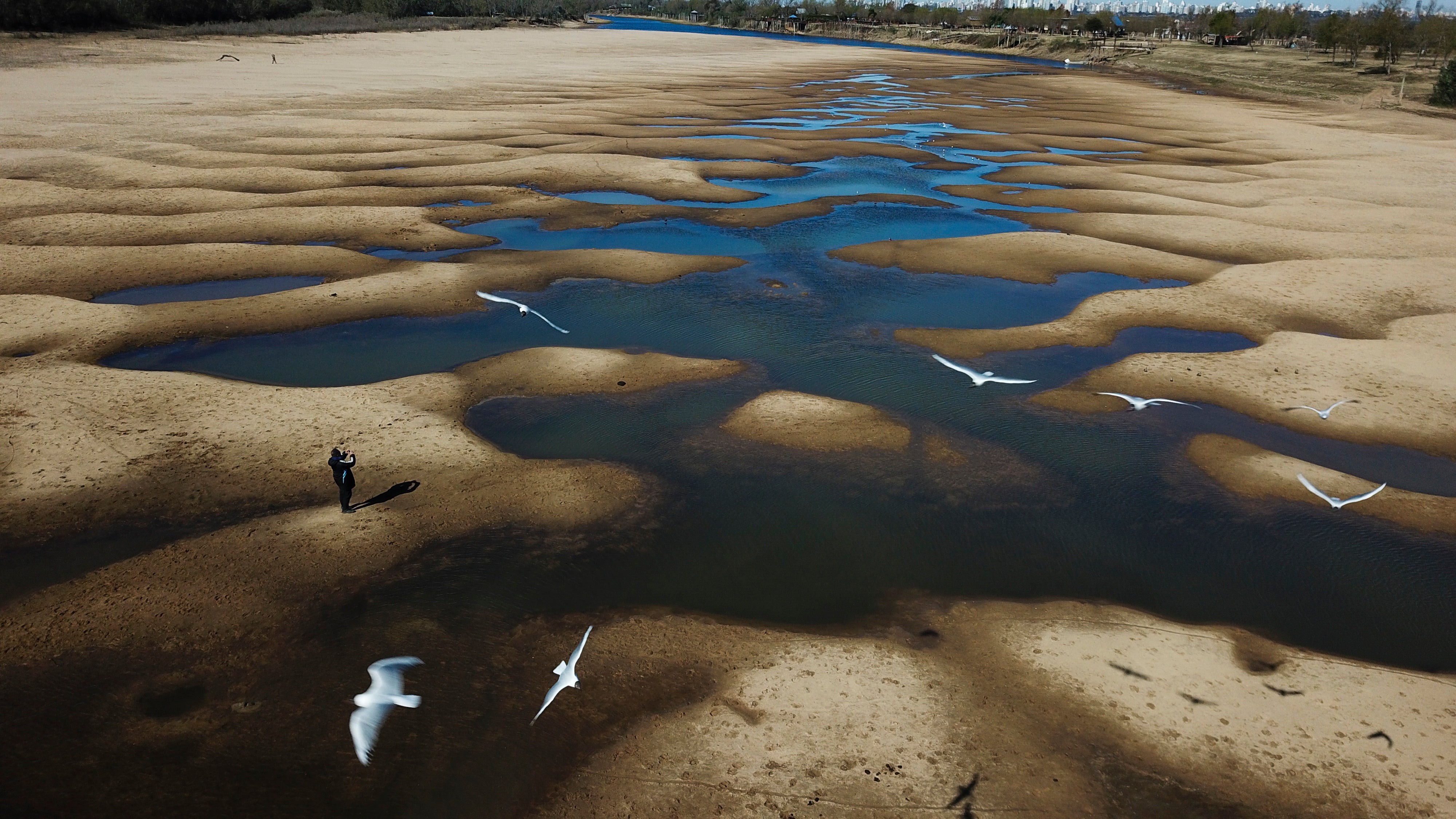Drought hits South America river, threatening vast ecosystem
The Paraná River, one of the main commercial waterways in South America, has reached its lowest level in nearly 80 years due to a prolonged drought in Brazil that scientists attribute to climate change

Your support helps us to tell the story
From reproductive rights to climate change to Big Tech, The Independent is on the ground when the story is developing. Whether it's investigating the financials of Elon Musk's pro-Trump PAC or producing our latest documentary, 'The A Word', which shines a light on the American women fighting for reproductive rights, we know how important it is to parse out the facts from the messaging.
At such a critical moment in US history, we need reporters on the ground. Your donation allows us to keep sending journalists to speak to both sides of the story.
The Independent is trusted by Americans across the entire political spectrum. And unlike many other quality news outlets, we choose not to lock Americans out of our reporting and analysis with paywalls. We believe quality journalism should be available to everyone, paid for by those who can afford it.
Your support makes all the difference.The Paraná River, one of the main commercial waterways in South America has reached its lowest level in nearly 80 years due to a prolonged drought in Brazil that scientists attribute to climate change.
At peril is a vast ecosystem that includes potable water for 40 million people, the livelihood of fishing communities and farmers, and the navigability of a major grain export hub.
The National Water Institute of Argentina has defined the low water level of the Paraná River, which goes through Brazil, Paraguay and Argentina, as “the worst since 1944.”
“This natural asset is clearly giving us signs that it’s not infinite,” said environmentalist Jorge Bartoli, coordinator of the organization “El Paraná No Se Toca” (Parana Should Remain Untouched).
The low water level is due to a record drought in Brazil, where the river begins.
The midwestern and southern regions of Brazil are in a big water crisis. Water reservoirs, including the giant Itaipu dam, are at their lowest levels in many years and Brazilian authorities have issued an emergency alert for five states: Minas Gerais Goiás, Mato Grosso do Sul, São Paulo and Paraná.
Reduced water levels are part of a natural cycle, but specialists warn that the scenario is more extreme because of climate change.
“These climate changes that were less frequent before are becoming more frequent,” said Brazilian climatologist José Marengo.
Environmentalists say deforestation is contributing to the problem.
The Paraná waterway and its aquifers supply fresh water to some 40 million people in countries including Brazil and Argentina.
In turn, it receives water from the Paraguay River, which has among its main sources the Pantanal area, a huge wetland located in the Mato Grosso region of southern Brazil.
The drought of the river is impacting the transport of goods.
Guillermo Miguel, president of the port of the city of Rosario, said vessels had to reduce their tonnage by approximately 20% to continue moving. He said transport costs are increasing.
___
Calatrava reported from Buenos Aires, Argentina.